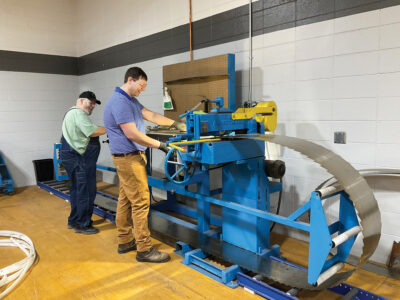Fed Economist Bullish On Single-Family Upturn
The National Association of Home Builders reported on nahb.now the following:
Looking beyond the current housing market downturn, the prospects for single-family home construction appear bright, according to Jordan Rappaport, a senior economist at the Federal Reserve Bank of Kansas City.
Rappaport has issued a new study that finds that years of under-building, which has left a housing deficit estimated by NAHB at more than one million homes, coupled with a shift to hybrid work models and commuting mean an expansion for single-family construction is coming after the current downturn.
Rappaport noted the following key findings on commute times, telework and home construction (that track closely to NAHB’s own Home Building Geography Index data):
•For a large share of metropolitan residents, long commutes contribute to making the outer suburbs a less desirable place to live than places closer to the metropolitan center.
•The negative effect of commuting on home construction reflects that constructing single-family homes is typically less expensive in the outer suburbs, where commuting times are longest.
•One of the largest benefits of hybrid working is reduced time spent commuting, a function of both fewer weekly trips and faster driving speed due to reduced traffic congestion.
Given these benchmark assumptions, Rappaport predicts that reduced commuting times will eventually boost aggregate single-family permits in the 56 core-based statistical areas (CBSAs), with a population of at least one million in 2020, by 427,000 per year, increasing single-family construction in these CBSAs by 92 percent above its level in 2019 and increasing national single-family construction by 49 percent above its level in 2019.
Based on this assessment, Rappaport predicts that national single-family permits will eventually rise to a long-term annual rate of 1.4 million.
However, Rappaport cites several headwinds already noted by NAHB that will prevent a quick ramp up of single-family home building once this current downturn subsides.
For example, he noted that when single-family construction begins to rebound, supply constraints are likely to slow its climb to its predicted long-term rate. Moreover, shortages of workers, construction materials, and ready-to-build lots are all likely to constrain the growth of single-family construction in the short term.
And proportionately scaling up employment to match Rappaport’s predicted increase in single-family construction to 1.4 million units per year would require developers to hire one million more construction workers than were employed in mid-2022.
Despite these headwinds, Rappaport is forecasting that the ramp up for construction will produce a long-term growth period for home building, and once single-family home construction moves forward, it is likely to remain high for many years.
Construction Job Openings Up By 54,000
The construction industry had 407,000 job openings in August (the most recent data available at this time), according to an Associated Builders and Contractors analysis of data from the U.S. Bureau of Labor Statistics’ Job Openings and Labor Turnover Survey (JOLTS).
JOLTS defines a job opening as any unfilled position for which an employer is actively recruiting.
Construction workers quit their jobs at a faster rate than they were laid off or discharged for the 18th consecutive month in August.
“Today’s job openings estimate is further evidence that contractors continue to hunt for talent,” said ABC Chief Economist Anirban Basu. “In August, 5 percent of all construction jobs were unfilled, higher than at any point between 2001, when the BLS began tracking it, and 2021. Contractors have every intention of expanding their staffing levels over the next several months, according to ABC’s Construction Confidence Index, but severely constrained labor supply will frustrate these efforts.
“Despite the increase in construction industry job openings, the overall number of job openings economywide fell to 10.1 million, its lowest level since June 2021,” said Basu. “This is actually good news for the real estate and construction segments, as any evidence of weakening economic momentum brings us closer to the point when the Federal Reserve can stop ramping up borrowing costs.”









